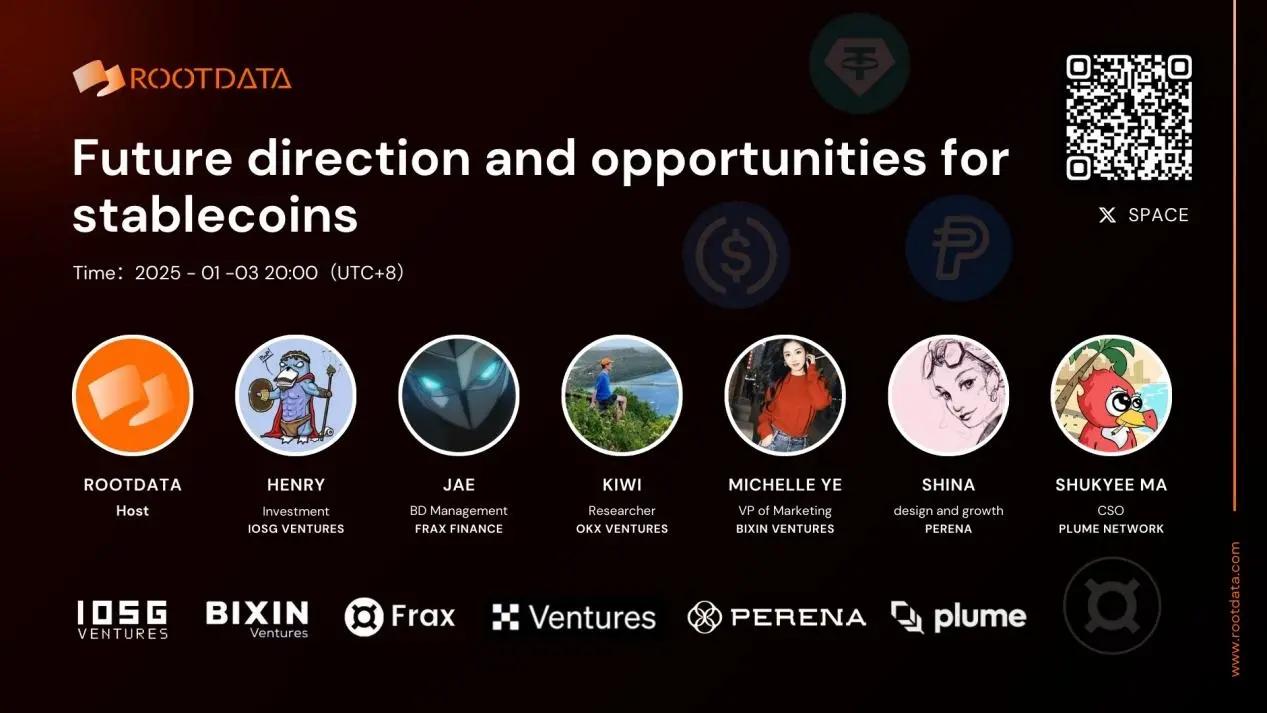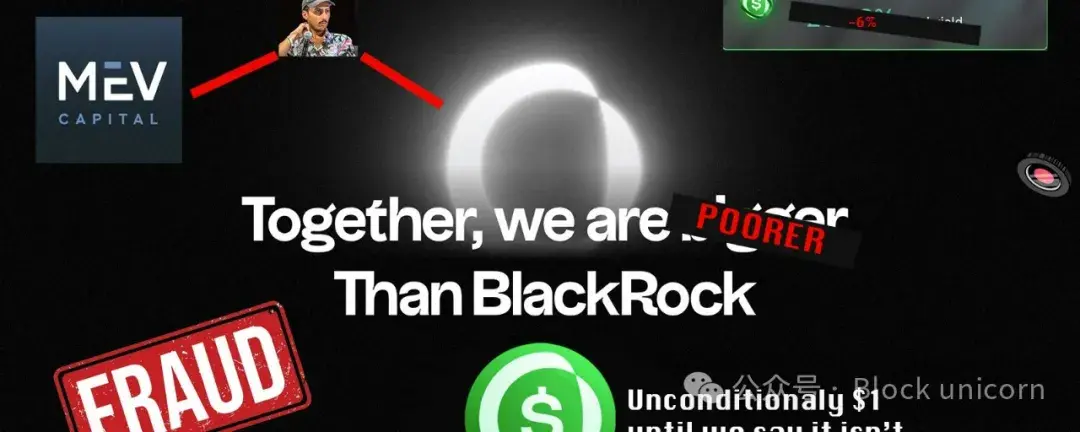Experts from the Hong Kong Web3.0 Association, including Wang Yang, jointly published an article: Issue Hong Kong dollar stablecoins to build a new Web3.0 ecosystem
Original Title: “Web3.0 Insights / Issuing Hong Kong Dollar Stablecoins to Build a New Web3.0 Ecosystem”
Authors: Wang Yang, Bai Liang, Jiang Zhaosheng
Source: Ta Kung Wen Wei
Hong Kong is accelerating the establishment of a regulatory framework for stablecoin issuers and has recently released a summary of public consultations on stablecoin regulation. From the consultation summary, it can be seen that the proposed stablecoin regulatory framework in Hong Kong maintains significant flexibility and openness on many issues while ensuring effectiveness and leadership, striving to balance effective investor protection with providing greater innovation space for potential issuers.
Incorporating stablecoins into regulation is another important measure for Hong Kong to continuously improve its regulatory framework and vigorously promote the development of virtual assets. Over the past two years, Hong Kong has made positive progress in compliance for virtual asset trading platforms (VATP), tokenization, and exchange-traded funds (ETF), but the overall pace of building a crypto ecosystem has been relatively slow. We understand that the premise for Hong Kong's development of virtual assets is safety and compliance, but in the face of increasingly fierce global competition, Hong Kong needs to accelerate its layout in the Web3.0 field, not only exploring compliance in financial transactions but also delving into the Web3.0 ecosystem to attempt more innovations from the asset side.
The introduction of a stablecoin regulatory framework will provide Hong Kong with a new opportunity to leverage stablecoins to accelerate the promotion of real-world assets (RWA) and tokenization practices in a compliant environment. This may bring more innovative vitality and space to Hong Kong's virtual asset ecosystem, helping it truly gain a voice in the global Web3.0 competition.
Accelerating Connectivity with Traditional Finance
After the release of the consultation summary, the industry is very concerned about Hong Kong's attractiveness to international issuers such as USDT or USDC. From the available information, the proposed stablecoin regulatory framework in Hong Kong is relatively friendly to international issuers, with more open measures compared to before, alleviating potential burdens on international issuers. For example, the consultation summary document does not restrict the types of currencies that stablecoins can be pegged to and holds an open attitude towards the storage of reserve assets in other regions. Considering the friendliness and continuity of Hong Kong's virtual asset policies, as well as Hong Kong's importance in the global financial market, the future stablecoin license in Hong Kong should be attractive to international issuers.
At the same time, considering that the connection channel with fiat currency is the most valuable and easily realizable scenario in the crypto ecosystem, and that stablecoins are currently an essential infrastructure for building this channel, we believe that more financial institutions and technology companies will participate in the issuance of stablecoins in Hong Kong. However, the biggest issue facing Hong Kong's stablecoins is not who will issue them, but who will use them. Finding suitable scenarios and business models is key to the development of stablecoins in Hong Kong.
The global trend towards the compliance of virtual assets is undeniable, but at present, simple compliance regulation cannot accelerate its development; rather, it may impose significant burdens on some virtual asset enterprises, as evidenced by the common losses experienced by licensed trading platforms after obtaining licenses. Especially as more regions incorporate virtual assets into regulation, the compliance costs that enterprises must bear to meet regulatory requirements will continue to rise. Compliance is meant to facilitate better development; whether for enterprises or regulatory agencies, if compliance is pursued merely for its own sake, it clearly does not align with market principles. Both licensed virtual asset exchanges and stablecoin issuers need to explore more feasible business profit models along compliant paths.
However, regarding the trading demand for virtual assets, reissuing US dollar stablecoins in Hong Kong at this stage is not particularly meaningful. The penetration of US dollar stablecoins in the crypto market is already very high, and the market structure is relatively stable, making it difficult for the leading positions of USDT and USDC to be challenged in the short term. Without sufficient supportive scenarios, merely replicating the existing business model of US dollar stablecoins may make it difficult for Hong Kong to establish an advantage in the stablecoin space. Therefore, issuing stablecoins pegged to the Hong Kong dollar as the main reserve has significant feasibility and advantages, while also exploring more suitable application scenarios for Hong Kong dollar stablecoins based on the existing ecosystem. Looking at the current direction of development for virtual assets and Web3.0 in Hong Kong, RWA may be the most suitable area for Hong Kong dollar stablecoins to focus on and exert effort.
The next stage of development for Web3.0 in Hong Kong and globally focuses on breaking down the barriers between the virtual world and the real world, allowing assets and funds to flow freely between the two systems. RWA is a crucial innovation for breaking technical barriers and accelerating the integration of the virtual and real. RWA can not only enhance transparency and security through blockchain technology, addressing some issues present in traditional financial systems, but also fundamentally activate more physical assets, lower investment thresholds, and attract a broader range of small and medium-sized investors into the market, thereby injecting more liquidity into the development of the real economy and digital economy.
As an international trading port and global financial center, Hong Kong has unparalleled advantages and enormous market demand in the RWA field, and has accumulated rich practical experience in this area, the most well-known being the tokenized green bonds issued by the SAR government. Only by focusing on a broader tokenization market, promoting a wider tokenization process for physical assets, and gradually building a compliant, reasonable, and friendly RWA ecosystem can Hong Kong truly lead the development of global Web3.0.
However, building an RWA ecosystem requires not only multi-dimensional support from capital, technology, and regulation, but also a new digital infrastructure to accommodate the liquidity released through digitization and tokenization. Hong Kong dollar stablecoins serve as such infrastructure. In the foreseeable future, the vast majority of RWA transactions in Hong Kong will be completed using compliant Hong Kong dollar stablecoins, connecting and integrating with traditional finance through stablecoins. Without compliant Hong Kong dollar stablecoins, Hong Kong's RWA practices will face significant challenges in terms of convenience and security. Therefore, the introduction of a stablecoin regulatory framework may lay the foundation for the innovative development of Hong Kong's RWA ecosystem, and as the RWA ecosystem flourishes, the role and value of Hong Kong dollar stablecoins as a bridge for Hong Kong's Web3.0 connections will become even more prominent.
Beware of Money Laundering and Fraud Risks
In addition to the necessary foundational conditions, openness, integrity, and security are key factors in determining whether a Hong Kong dollar stablecoin can be constructed to meet the needs of the RWA ecosystem.
Firstly, Hong Kong dollar stablecoins should possess sufficient openness. Although Hong Kong dollar stablecoins are priced in Hong Kong dollars, in the actual issuance and operation process, they should transcend the Hong Kong market, strengthening connections with the Greater Bay Area and international markets, allowing more quality assets to enter through RWA tokenization. Despite Hong Kong currently being one of the most active regions for virtual assets and Web3.0 innovation, it must be acknowledged that the Hong Kong market is actually a very small market in a physical sense; focusing solely on local demand to drive virtual asset and Web3.0 innovation is not particularly meaningful. The external interest in Hong Kong is largely due to the broader market space and development opportunities behind it.
Therefore, when considering the layout of Hong Kong dollar stablecoins and RWA, it should be based in Hong Kong while boldly radiating outward. A theoretically feasible approach is to reference the previous development model of Hong Kong stocks, leveraging the abundant physical assets and trade demand in the Greater Bay Area and mainland markets to promote the development of the RWA ecosystem, and constructing a token trading system and rules based on blockchain networks through compliant Hong Kong dollar stablecoins, attracting more international assets and funds into Hong Kong.
Secondly, it is essential to integrate advantageous resources and comprehensively consider the development of Hong Kong stablecoins, while being wary of fragmentation issues. Although different commercial institutions can theoretically issue their own stablecoins based on their needs and create a façade of prosperity with numerous market participants in the short term, given the small size of the local market and the immature RWA ecosystem, this could further disperse the already scarce liquidity and even trigger vicious competition among different stablecoins. In the early stages of market development, a leading entity is needed to drive growth in an open and diverse environment.
Previously, one of the authors, Professor Wang Yang, called for Hong Kong to implement a comprehensive plan, with licensed institutions (including the SAR government and financial institutions such as banks, insurance companies, and funds) conducting unified issuance of Hong Kong dollar stablecoins, along with corresponding profit distribution schemes, enabling it to quickly become a mature, trustworthy, and widely applicable financial product with the joint efforts of different commercial institutions. Within the current regulatory framework, it is possible to concentrate advantageous financial and resource elements to promote the development of leading stablecoins, thereby allowing stablecoins to flourish in an open environment and explore vertical advantages in the increasingly prosperous RWA ecosystem through free competition.
Finally, attention must be paid to the risks associated with Hong Kong dollar stablecoins to enhance their security. A report previously released by the United Nations pointed out that stablecoins have become one of the commonly used payment methods for money laundering and fraud in Southeast Asia. The "Global Virtual Currency Crime Situation and Security Governance White Paper" jointly published by the OKLink Research Institute and the Ministry of Public Security's Third Research Institute also found that over 60% of various virtual asset-related risk incidents are associated with stablecoins.
Although compliant stablecoins offer greater security for issuers, various illegal financial activities related to stablecoins, such as money laundering and terrorist financing, often do not have a direct connection to the issuers. Even if the issuers can be identified, it is often difficult to resolve the issues. Therefore, in the development of Hong Kong dollar stablecoins, in addition to an appropriate regulatory framework, relevant institutions can also leverage compliance technology to empower the ecosystem, enhancing the ability of issuers and regulatory agencies to prevent and respond to potential risks associated with Hong Kong dollar stablecoins through various technological means. Only safe and compliant Hong Kong dollar stablecoins can lay a solid foundation for building an open, orderly, and vibrant RWA tokenization ecosystem in Hong Kong, significantly enhancing Hong Kong's strength and level in the digital economy and financial technology.
(Note: Wang Yang is the Vice President of the Hong Kong University of Science and Technology and Chief Scientist of the Hong Kong Web3.0 Association; Bai Liang is the Founder and CEO of Zero One Think Tank; Jiang Zhaosheng is a Senior Researcher at OKLink Research Institute.)








